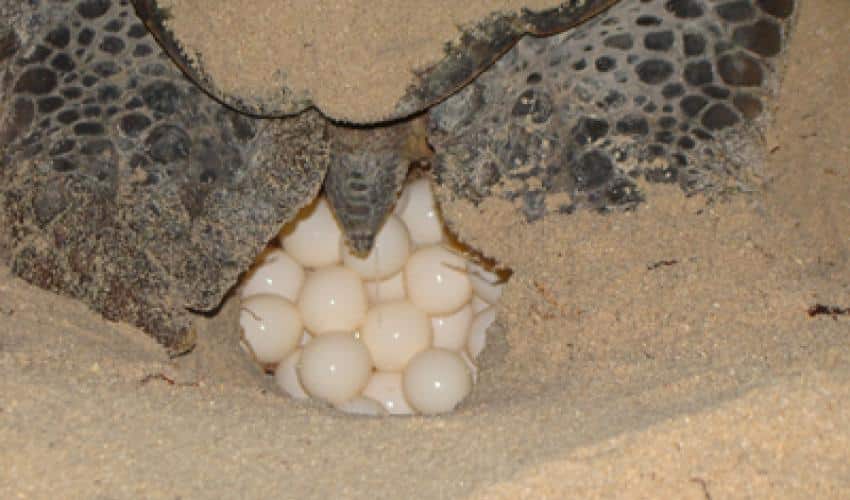Interesting
Amazing Aerial Footage Shows Thousands Of Turtles Nesting
- Thousands of female Green Turtles congregated on the shore of Australia’s Great Barrier Reef.
- In aerial footage, the turtles were spotted going to the shore and burying their eggs for hatching.
- The green turtles are becoming endangered and are under threat due to several reasons.
A recent viral footage features thousands of Green Turtles making their way to the shore of Great Barrier Reef in Australia during their yearly “nesting season”.
Captured by scientists from Queensland’s Department of Environment and Science (DES), the drone featured the largest numbers of turtles in the world at the vegetated coral cay, which is approximately 620 kilometers northwest of Cairns.

Using the technology, the team said that they counted at least 64,000 Green Turtles swimming around the island.
The creatures lay their eggs between May to September and Raine Island is considered as the “world’s largest green turtle rookery”.

Apparently, the turtles in the ocean are all waiting for the sun to set as they usually build their nests and hatch at night time.
One female turtle, for example, releases 80 to 120 eggs which are about the size of a ping-pong ball.

As soon as the hatchlings emerge from the sand, they will travel and migrate long distances between feeding locations and the islands where they were born.

The female Green Turtles normally nest 3 to 4 times per season with 2 to 3 weeks intervals. The incubation period of the eggs take for about 60 days.
Adult Green Turtles never look back to their nesting sites

It is not in the female turtles’ nature to nurture its hatchlings. So the female turtles never visits the nest site she builds.
The Green Turtles are also considered one of the largest sea turtles. These creatures are found mostly in tropical and subtropical waters.

According to the CNN, Green Turtles are currently becoming endangered. They are under threat due to four reasons: 1) hunting; 2) loss of beach nesting locations; 3) over-harvesting of their eggs; and 4) becoming trapped in fishing gears.
Despite thousands of turtles coming to Raine Island to hatch, scientists observed that they were not reproducing as expected. The small numbers of hatchlings, experts said, are due to “inhospitable terrain and nests flooding”.

“We sort of became aware that although there’s these massive aggregations, the actual reproduction isn’t working so well,” DES member Dr. Andrew Dunstan said.

Dunstan also explained that turtles were falling off cliffs. As a result, they end up getting trapped under the scorching heat of the sun.
World Wildlife Fund added that hundred of thousands of turtles are accidentally trapped in fishing gears every year.


-
OMG6 years ago
Man Iced Neighbor Who Repeatedly Asked Him “When Are You Getting Married?”
-
Interesting7 years ago
The Secret Meaning of Anklets And Why Some Wives Wear Them
-
Interesting7 years ago
Waking Up Between 3 to 5 AM Could Mean You’re Experiencing Spiritual Awakening
-
Interesting6 years ago
Pork Fat Is Officially One of the World’s Most Nutritious Foods































